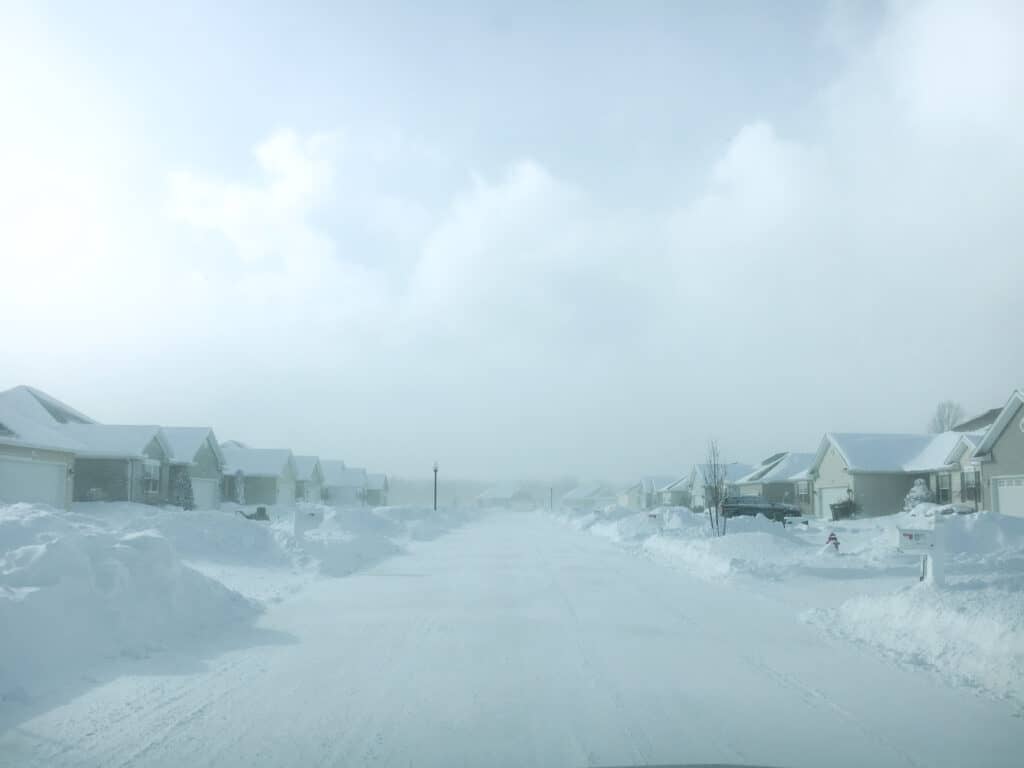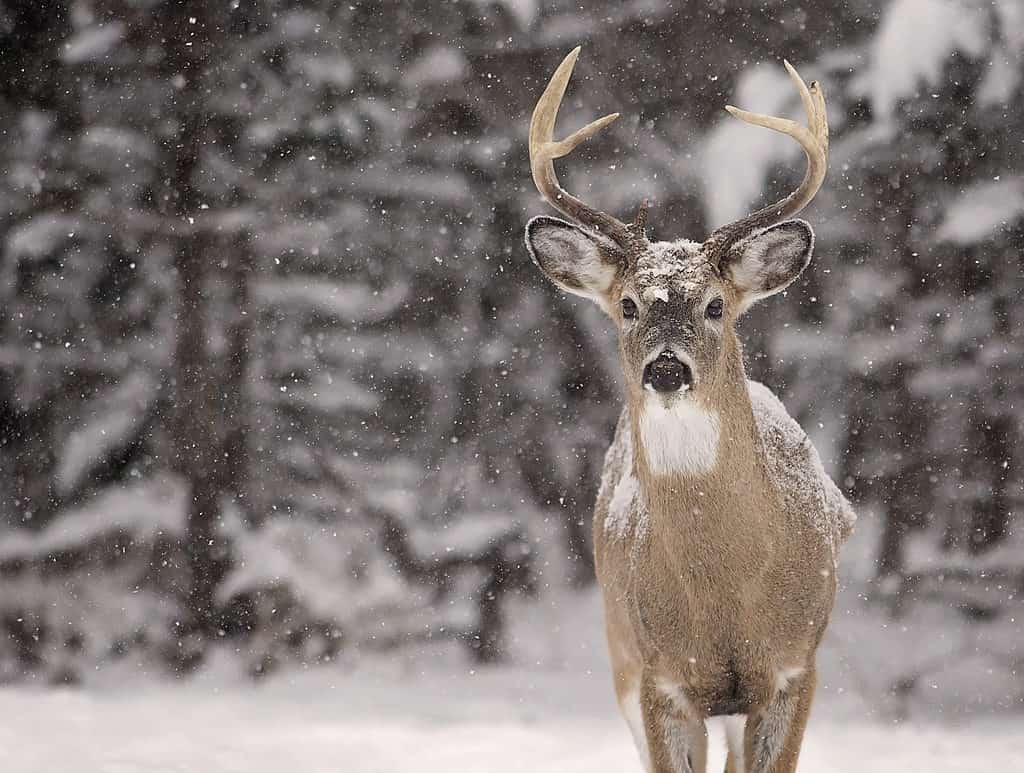As you may already know, Texas is not exactly known for its snow and icy winter weather. In fact, many parts of the state experience relatively mild winters compared to other parts of the country. However, Texas is a massive state, with the most northern parts nearly 1,000 miles north of the most southern region, so the weather varies depending on where you are in the state.
However, Texas does experience some classic winter weather, and when it does, it can be pretty dramatic. And that is certainly the case with the biggest blizzard ever to hit the state. So let’s dive in and learn more about this incredible weather event and its impact on the Lone Star State.
Weather Patterns In Texas
Despite popular belief, the climate in Texas is not just hot all the time. In fact, Texas is so large that it spans both cool and warm sections of the Northern Hemisphere’s temperature zones.
Being such a massive state, there are many climate types in Texas, including continental steppe, mountain ranges, arid desert, modified marine, and humid subtropical.
The continental steppe climate takes up most of the state and is found in the flat plains of Texas and is characterized by large temperature ranges, low rainfall, and low humidity. The steppe also typically has mild winters. The mountain climate will occasionally have heavy rainfall and cooler temperatures than other areas of the state The coastal areas of the state are subtropical and typically experience heavy rainfall and high humidity.
August is typically the hottest month in Texas, with an average high temperature of 94.5 degrees Fahrenheit. This makes Texas one of the hottest states in the country. Texas experiences high temperatures above 90 degrees Fahrenheit for 93.1 days per year.
The highest temperature ever measured in Texas was 120°F (48.9°C), recorded on August 12, 1936, in Seymour, during the 1936 North American Heatwave, and again on June 28, 1994, in Monahans. The lowest temperature ever measured in Texas was −23 °F (−30.6°C), recorded on February 8, 1933, in Seminole.
Winter In Texas
In the winter, the southern part of Texas rarely sees temperatures below freezing. The Rio Grande Valley can reach as high as 90 degrees Fahrenheit in January.
On the other hand, the northern half of the state experiences yearly snowfall, with the most snowfall occurring in the Texas panhandle.
Blizzard conditions can also occur in these high plains, causing highways to close due to strong winds and heavy snow. Winter is generally the driest season for the entire state, except for East Texas. As a result, drought conditions are expected at this time of year.
The Blizzard Of 1929 In Texas

The biggest blizzard in Texas happened in December 1929.
©eyerazor/Shutterstock.com
The beginning of December 1929 was unusually warm in North Texas, with high temperatures mostly in between 60 and 70 degrees. However, these mild winter temperatures quickly turned frigid on December 17 when a polar front moved into the region.
Within a day, temperatures had dropped by about 40 degrees. On December 18, despite sunny skies, the temperature struggled to go above freezing. A strong storm system was arriving in the northern part of the state, and in the panhandle, temperatures were falling to nearly 0 degrees. By the morning of December 19, a couple of inches of snow had fallen in parts of the Panhandle.
The storm system moved slowly southeastward. Snow began falling in west Texas regions on December 20. The snowstorm continued through the night. By the time the sun rose on December 21, lots of snow had fallen across Central Texas, in Travis and Williamson counties, and northeast towards Tyler and Nacogdoches. Some areas of the state had already received 16 inches of snow by that morning.
The heavy snowfall lasted for several hours before dwindling in the evening. By the late evening of December 21, the snow was only occurring in the furthest east regions of Texas.
Despite the storm lasting only 24 hours, the amount of snowfall was extraordinary. The area of snowfall in which snowfall was 12 inches deep or more was 3 counties wide. Some towns had snowfall totaling 24 inches or more, which is the heaviest snowfall in Texas ever recorded.
The towns of Clifton and Hillsboro, in particular, received the most snow. Clifton had 24 inches of snow during the 24 hour storm. And Hillsboro received a staggering 26 inches, which is officially recorded as the all-time record for the highest snowfall in Texas.
Inconvenience, Casualties, And Damages
The blizzard that hit Texas in 1929 was a significant event that had a major impact on the state. The storm brought heavy snowfall and extremely cold temperatures, causing widespread disruption and hardship for many people.
There were likely many cancelations and disruptions due to the blizzard, as the heavy snow and cold temperatures made it difficult for people to travel or go about their usual activities. Some people may have gotten snowed in, unable to leave their homes or travel to other places due to the dangerous conditions.
During the blizzard, people may have struggled to access food, water, and other necessities. In the days before widespread electricity and modern heating systems, it could have been particularly challenging to keep warm and maintain a reliable source of food and water during such extreme weather conditions.
There is no official report on the damages and casualties this storm caused.
Wildlife In Texas
Texas is home to a diverse array of wildlife, including a wide range of mammals, birds, reptiles, amphibians, and fish. Some of the state’s most iconic and well-known species include white-tailed deer, pronghorn antelope, javelina, bison, and alligators.
Some of the species have adapted to survive in cold weather. But, unfortunately, not all of them can survive the blizzards and cold waves. Let’s look at how wildlife in Texas survives in extreme cold weather.
White-Tailed Deer

The white-tailed deer have thick coats to survive in the winter.
©iStock.com/Lynn_Bystrom
White-tailed deer are highly adaptable animals, and they have a number of traits that help them survive during the winter months. For example, as summer turns to fall and then winter, deer start to eat more, building up layers of fat to help insulate their bodies from the cold.
They also shed their reddish summer coats and grow thicker, more insulating winter coats. With these adaptations, white-tailed deer are well-equipped to withstand harsh winter weather, including blizzards like the one that hit Texas in 1929.
Bats
In cold weather, bats migrate to find their food sources. They travel to areas where there are plenty of insects to eat. On the other hand, some bat species choose to hibernate instead of migrating.
When hibernating, they will look for a suitable place to rest, like a cave or culvert, until the winter is over. They can normally survive the cold weather as they are well prepared in advance.
Birds
When the weather gets cold, birds have a few tricks up their sleeves to help them survive. For example, you may have noticed that some birds puff up their feathers to create a layer of warm air around their bodies. Additionally, many birds flock together to find food sources and build their energy reserves.
This can be especially important for the winter months, when food may be scarce. In general, birds that have been able to build up fat stores and have had access to consistent, nutritious food and suitable habitats are more likely to be healthy and make it through the winter. On the other hand, birds with little fat reserves would not survive a blizzard like in 1929.
Fishes
When the temperature drops, many fish will slow down and swim to deeper waters where it’s slightly warmer. However, fish that live in shallow water, especially near the coast, may not be able to withstand a severe freeze.
This can lead to a phenomenon known as a “fish kill,” where large numbers of fish die during a cold snap.
Lizards

In Texas, lizards go into a state of brumation during winter.
©Bob Ascott/Shutterstock.com
Lizards in Texas can survive the winter and blizzards by going into a state of brumation, finding warm places to shelter, and regulating their body temperature. Different species may use different strategies, as they have different adaptations to deal with the cold.
Up Next:
The photo featured at the top of this post is © iStock.com/4u4me
Thank you for reading! Have some feedback for us? Contact the AZ Animals editorial team.






